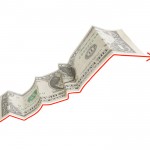 Marketing optimization has never been more critical because it's never been more important for marketers to know the decisions we make are the best ones. The need is driven by globalization, the accelerating pace of technological change, ever-scarcer resources, and so many other factors.
Marketing optimization has never been more critical because it's never been more important for marketers to know the decisions we make are the best ones. The need is driven by globalization, the accelerating pace of technological change, ever-scarcer resources, and so many other factors.
In this environment, leading companies are increasingly turning to marketing optimization to achieve higher response rates, improve channel efficiencies and manage their operating complexities. With marketing optimization, you can take the knowledge of your own business constraints, and then apply them in your own operating environment to get the best results.
The way to approach it is to first define your optimization objectives, such as maximizing profit, revenue or response rate, or minimizing total marketing cost. You can even define two objectives in the same scenario to see how competing goals might affect each other. Then, you’ll need to put parameters around those objectives, such as the budget ceiling or minimum response rate. After that, you should add in contact policies – even at the household and/or customer level within the same scenario.
Once you’ve done that, you can change variables to calculate the impact of each change, such as supply cost increases, competitive action, delivery intervals or any other change that impacts your marketing activities. At this point, you can even analyze trade-offs between objectives and constraints so you always know the impact of changes beyond your control as well as the impact of your decisions to respond to those developments.
To illustrate more clearly, here are eight times you need marketing optimization to make the right call - specifically when you:
- Are in planning mode and you need to know how your marketing activities will drive a given objective (i.e. revenue or profitability goals), based on your product set, target market, available channels, variable costs and other constraints.
- Need ways to segment and target beyond basic demographics and possibly account for customer-level attributes, such as consumer credit scores or recent purchase amounts.
 Have a great marketing plan and then your budget gets cut. We’ve all had this happen – maybe once a year, and maybe more often.
Have a great marketing plan and then your budget gets cut. We’ve all had this happen – maybe once a year, and maybe more often.- Want to manage the number of offers each customer gets in any given time period.
- Are looking to to maximize results in any given campaign and/or results across all campaigns.
- Need to how which customer responds most favorably to which offer(s).
- Would like to identify the best channel to use for any given customer or groups of customers, be it your stores, branches, contact center, direct mail, email, mobile or other channels.
 Want to know which time of day generates the most opt-outs so you can avoid that time.
Want to know which time of day generates the most opt-outs so you can avoid that time.
The idea that email is a “free” channel only holds true if you ignore the big opportunity cost of opt-outs. Marketing optimization is how you can minimize that cost.
There are certainly other times marketing optimization can make a difference, and another example is how a leader such as Bank of America drives success with marketing optimization.
For another perspective on how marketing optimization can make a difference for your organization, please register to download this paper: Improve ROI with Marketing Optimization and let me know what you think. As always, thank you for following!

